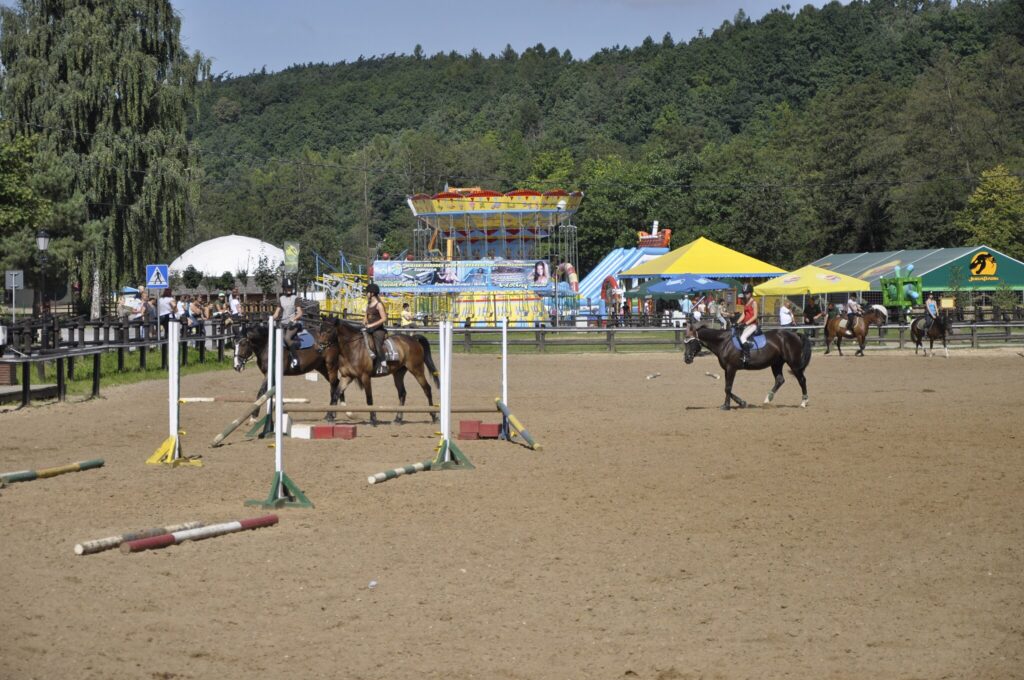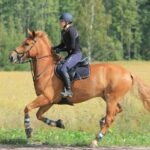Ground poles are one of the most versatile, accessible, and effective training tools available to equestrians at every level. From beginners to Olympic riders, these simple wooden rails offer extraordinary benefits for developing a horse’s balance, rhythm, coordination, and mental focus. When properly incorporated into training sessions, ground poles can transform a disengaged, heavy-on-the-forehand horse into an attentive, collected athlete with improved self-carriage. This comprehensive guide explores how to effectively use ground poles to enhance your horse’s engagement, creating a more responsive, balanced, and connected equine partner.
Understanding Horse Engagement: What Are We Trying to Achieve?
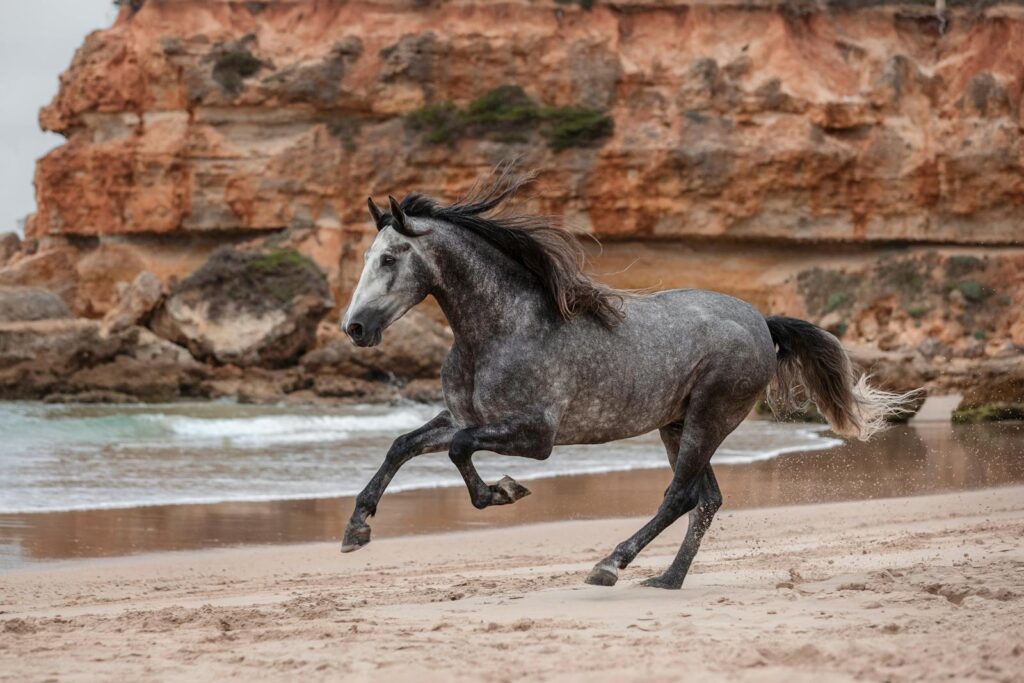
Horse engagement refers to the proper use of the hindquarters, where the horse steps deeper under its body, elevates the forehand, and creates energy that flows from back to front. When a horse is truly engaged, you’ll notice a rounded topline, lifted withers, and an overall uphill balance that makes the horse appear to “sit” more. This biomechanical position allows for better weight-bearing on the hindquarters, freeing up the forehand for more expressive movement and preventing long-term soundness issues caused by excessive weight on the front legs. Proper engagement is the foundation of collection in dressage, the bascule needed for clean jumping, and the balanced carriage essential for any equestrian discipline from western riding to eventing.
Benefits of Ground Pole Work for Both Horse and Rider
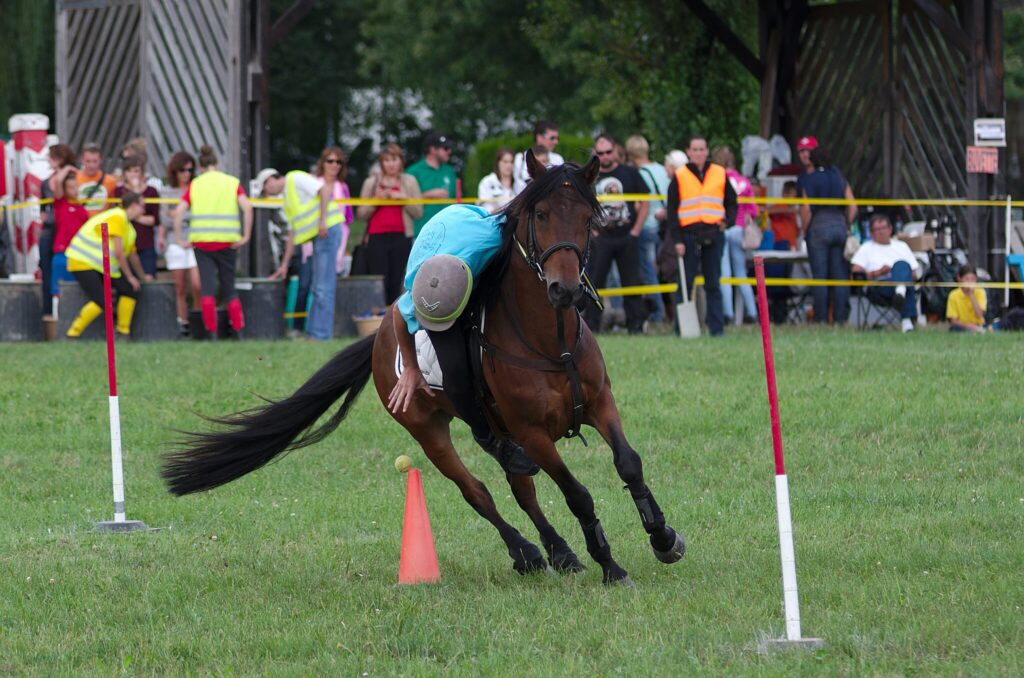
The seemingly simple act of navigating ground poles delivers remarkable physical and mental benefits for horses at all training levels. Physically, pole work strengthens crucial muscle groups in the hindquarters, core, and topline that support proper engagement, improving proprioception (body awareness) and developing the muscles needed for collection without the strain of more advanced exercises. Mentally, poles present a cognitive challenge that encourages horses to focus, think about foot placement, and become more responsive to subtle rider aids. For riders, pole exercises provide concrete visual feedback about straightness, rhythm, and evenness of gaits while developing a more refined feel for when the horse is truly engaging correctly. Additionally, pole work creates variety in training routines, preventing the mental staleness that can develop with repetitive arena work.
Essential Equipment and Safety Considerations
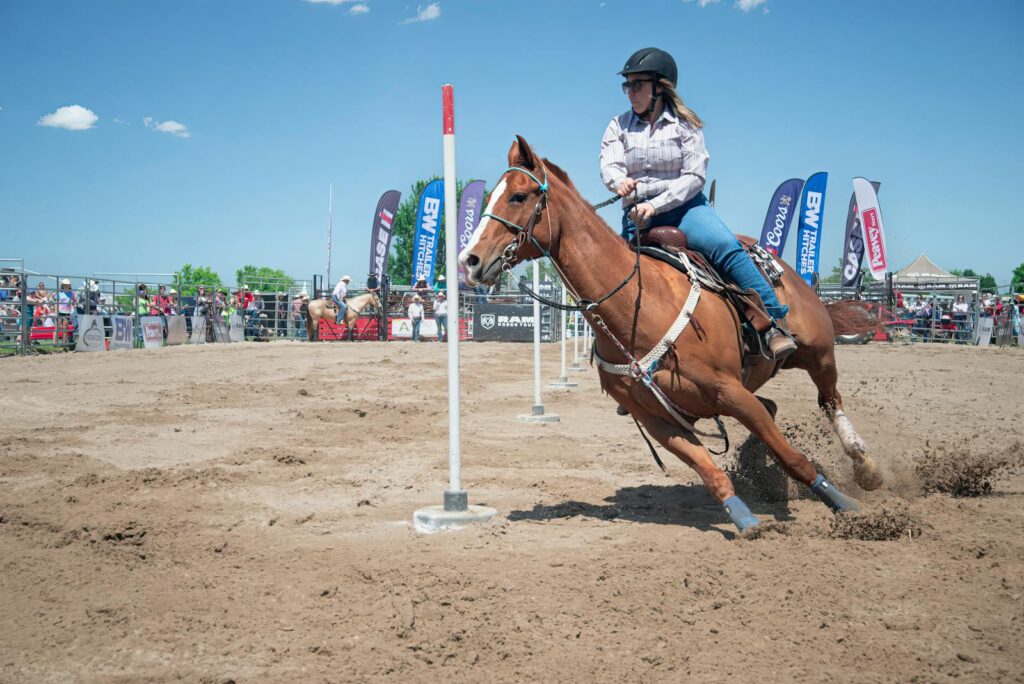
The beauty of ground pole work lies in its simplicity, requiring minimal specialized equipment to get started. Standard wooden poles (typically 8-10 feet long and 3-4 inches in diameter) are ideal, though PVC pipes can serve as lighter alternatives for beginners or young horses. Bright pole colors or striped pole wraps can enhance visibility, making it easier for horses to gauge distances and height. Safety should always be paramount—ensure poles are in good condition without splinters or cracks, and consider using proper pole holders rather than stacking poles on unstable objects. Always maintain appropriate footing in your work area, as deep or slippery surfaces can increase the risk of trips or strains when horses are navigating poles. For horses new to pole work, begin with just one or two poles and introduce more complex patterns gradually to build confidence and prevent overwhelming your equine partner.
Starting Simple: Basic Ground Pole Layouts for Beginners
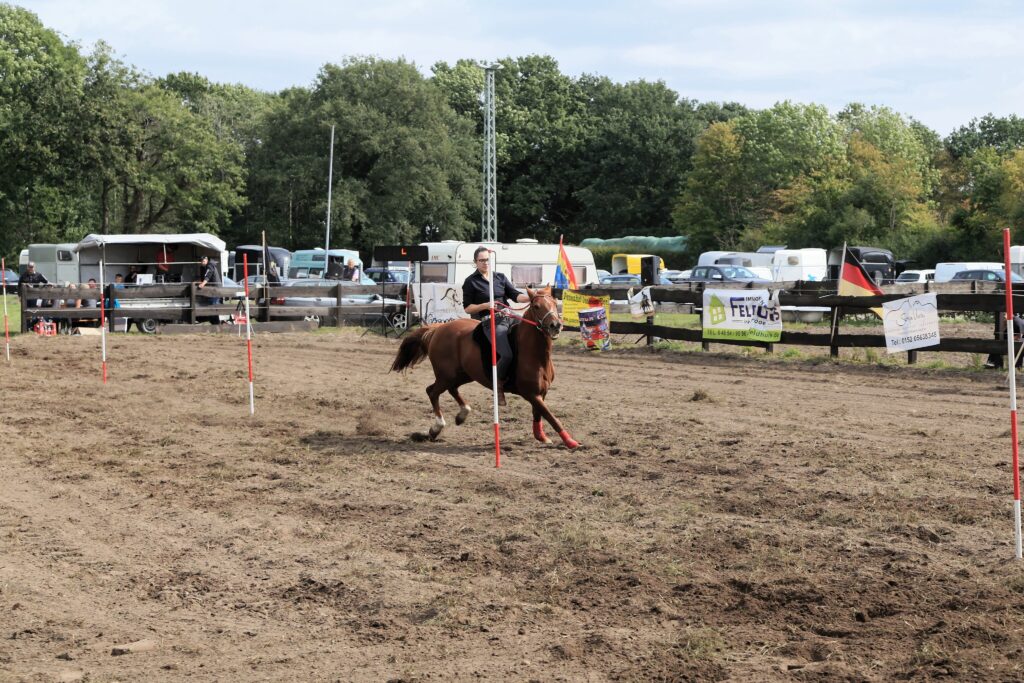
For horses and riders new to ground pole work, simplicity is key to building confidence and establishing a positive learning experience. Begin with a single pole placed on the ground and walk over it repeatedly from both directions, focusing on maintaining a steady rhythm and straight approach rather than allowing your horse to rush or drift. Once comfortable with one pole, progress to two poles placed about 4-5 feet apart (the approximate length of one walking stride), encouraging your horse to step deliberately between them without changing pace. As coordination improves, create a “runway” of 3-5 poles spaced at walking distance, using this formation to develop consistency in stride length and help your horse learn to lift his feet with more awareness. Remember that even these simple layouts are challenging for horses unaccustomed to pole work, so reward small successes and maintain realistic expectations as you and your horse develop this new skill.
Walking Pole Exercises to Develop Awareness and Precision
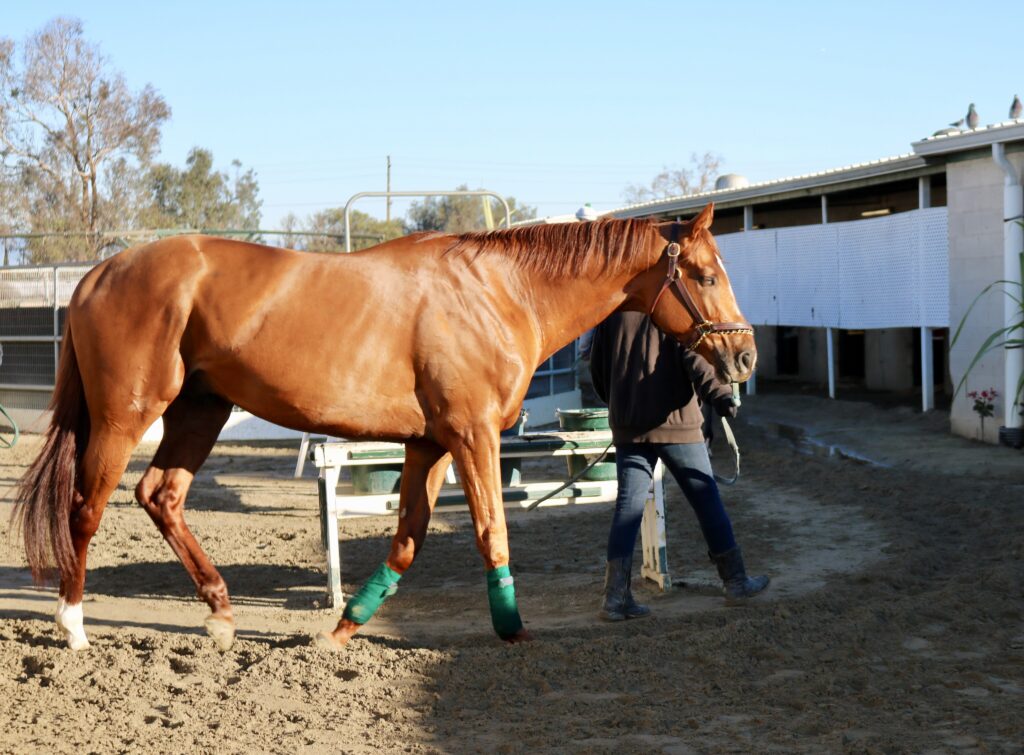
Walking exercises over ground poles provide an excellent foundation for developing engagement, as the slower pace allows both horse and rider to focus on quality rather than speed. Set up a series of 4-6 poles spaced at 2.5-3 feet apart (depending on your horse’s natural stride length) and approach them on a loose but attentive rein, encouraging your horse to look down and place each foot deliberately. To enhance lateral flexibility and hindquarter activation, arrange poles in a fan pattern where they’re closer together on one side (approximately 2 feet) and wider on the other (about 3.5 feet), requiring your horse to adjust stride length while maintaining rhythm. For more advanced horses, create an L-shape or serpentine pattern with poles, asking your horse to navigate turns while stepping over poles, which significantly increases the difficulty and requires greater hindquarter engagement to maintain balance. These walking exercises might seem deceptively simple, but they establish the mental and physical foundation necessary for more challenging work at faster gaits.
Trotting Pole Patterns to Enhance Rhythm and Suspension
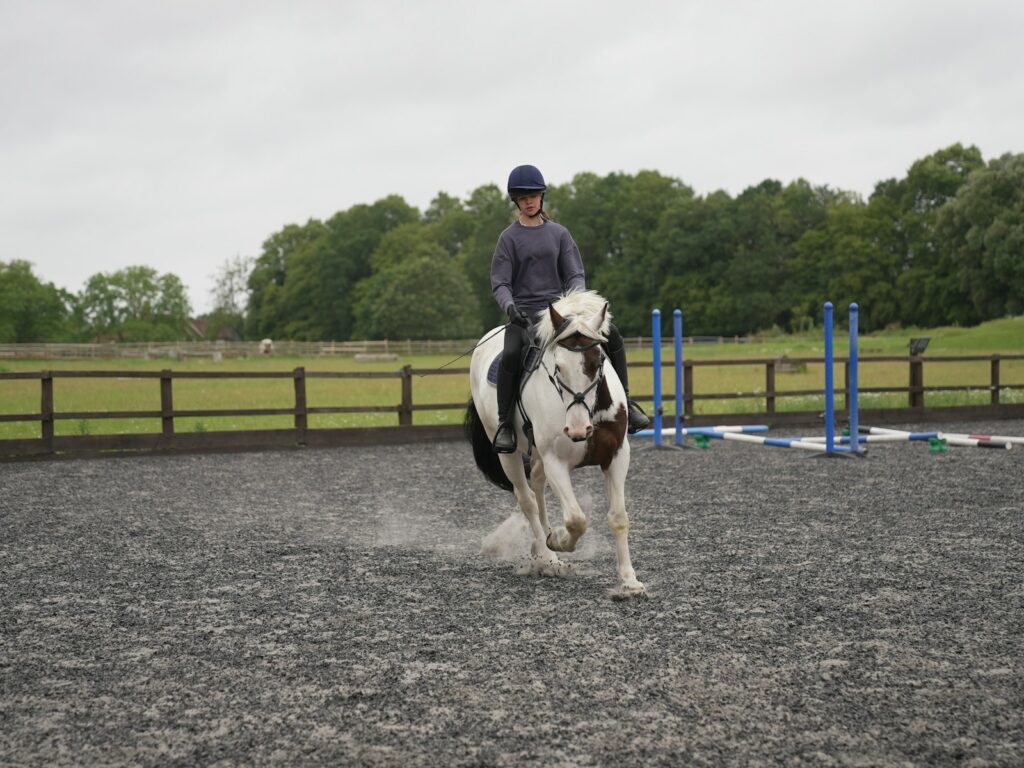
Trotting over poles dramatically enhances engagement by encouraging the horse to lift the back, increase joint flexion, and develop more suspension in the gait. Set basic trot poles approximately 4.5 feet apart for an average horse (adjusting slightly for very long or short-strided horses), creating a straight line of 4-6 poles on a circle or along the quarter line of your arena. To develop adjustability, gradually decrease the distance between poles to about 4 feet, requiring your horse to collect and shorten the stride, then increase spacing to around 5 feet to encourage extension—this exercise teaches your horse to respond to subtle seat and energy aids while maintaining consistent rhythm. For a more challenging variation, create a staggered or zigzag pattern where poles aren’t perfectly aligned, requiring your horse to pay attention to foot placement and engage the core muscles for balance. Throughout all trot pole work, focus on maintaining consistent tempo and encouraging your horse to step through with equal effort from both hind legs, avoiding the common issue of rushing or flattening over the poles.
Canter Pole Exercises for Advanced Engagement
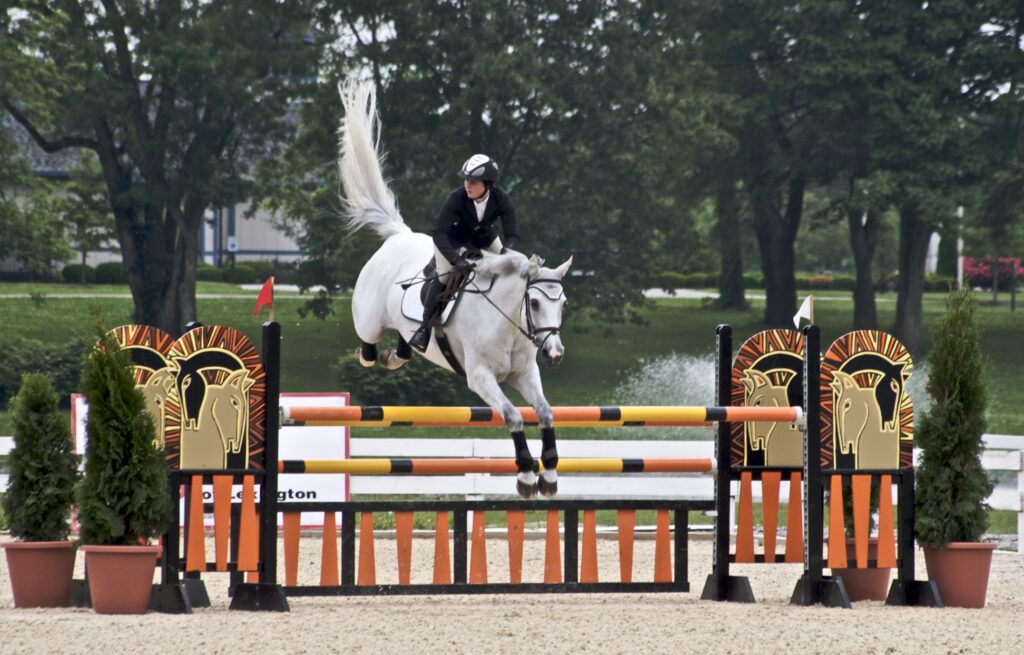
Canter pole work represents a significant step up in difficulty but offers tremendous benefits for developing true collection and engagement. Begin with a single pole approached in a balanced, unhurried canter, focusing on maintaining the same rhythm before, during, and after the pole without allowing your horse to flatten or rush. Once comfortable with single poles, progress to a line of 3-4 poles set at approximately 9-12 feet apart (depending on your horse’s natural stride length), encouraging your horse to maintain a steady rhythm while lifting the back and engaging the hindquarters over each pole. For horses with established canter pole skills, raised cavaletti (poles elevated 6-12 inches off the ground) can further enhance suspension and engagement by requiring more joint flexion and core strength. Always approach canter pole work with patience, as many horses initially struggle with maintaining balance and rhythm at this gait, and build up gradually from one or two poles to more complex patterns as your horse’s strength and confidence develop.
Raised Poles and Cavaletti: Taking Engagement to the Next Level
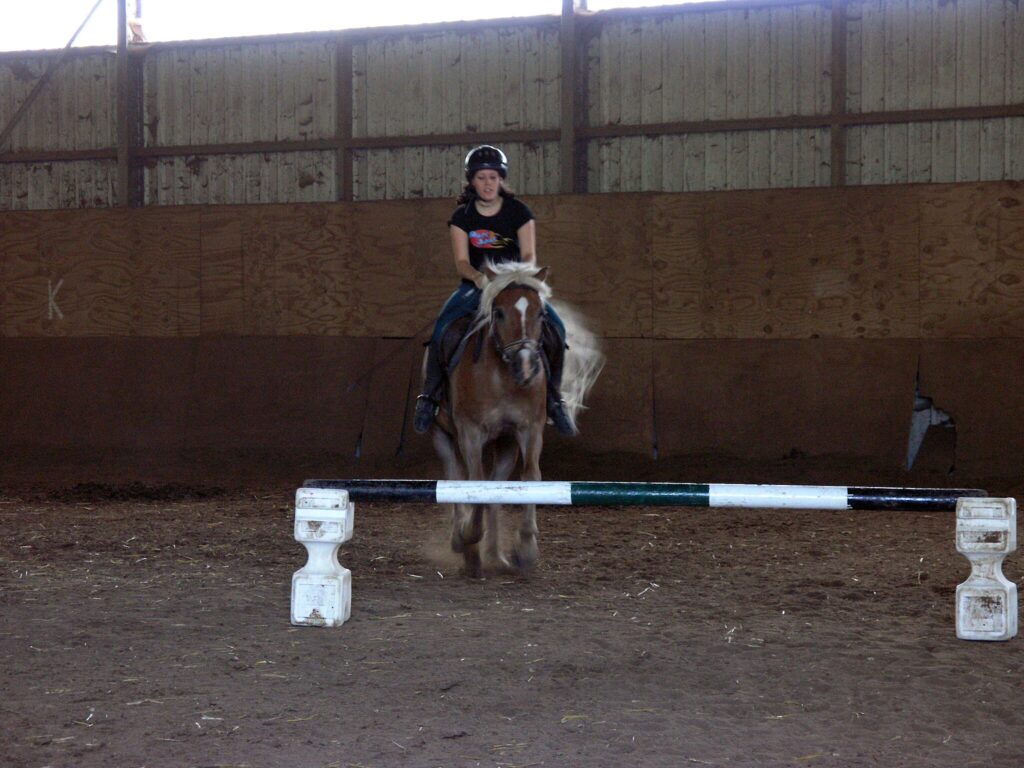
Elevating ground poles transforms a simple training exercise into a powerful tool for developing significant engagement and muscular development. Start with modest heights, raising just one end of the pole 6-8 inches using proper cavaletti blocks or pole holders, creating an ascending or descending challenge that encourages the horse to lift individual legs higher while maintaining balance. As your horse becomes comfortable, progress to fully raised poles (8-12 inches from the ground) spaced appropriately for your working gait, requiring greater joint flexion, higher hoof elevation, and increased core engagement to navigate successfully. Alternating between raised and ground-level poles creates a particularly effective exercise that prevents the horse from anticipating the effort needed and develops adjustability within the gait. When introducing raised poles, always be mindful of your horse’s fitness level and joint health, as the increased demand can be taxing on horses without the muscular development to support this work, and build height gradually while prioritizing quality of movement over clearing impressively tall obstacles.
Creating Gymnastic Combinations for Maximum Engagement
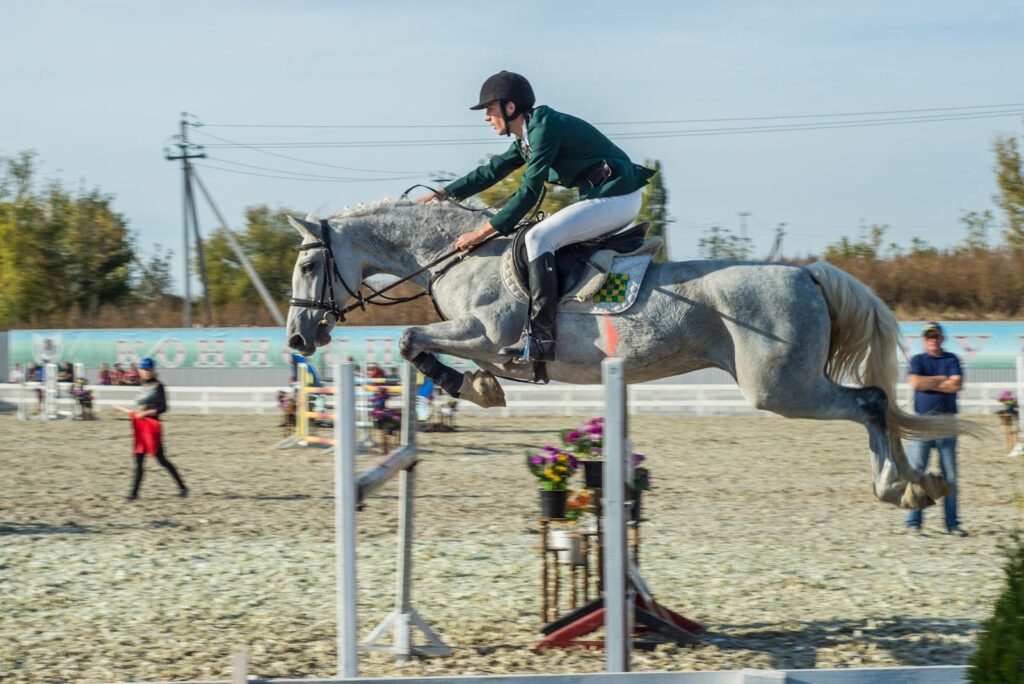
Gymnastic pole patterns combine multiple elements to create comprehensive exercises that develop engagement through variety and challenge. A highly effective gymnastic setup includes a series of trot poles (4-5 poles at 4.5 feet apart) flowing directly into walking poles (3 poles at 2.5-3 feet apart), requiring the horse to transition smoothly from trot to walk while maintaining engagement over poles—this exercises teaches the horse to rebalance without hollowing or losing connection through transitions. Another valuable gymnastic combines curved and straight pole sections, such as 4 poles arranged in an arc followed by 3 poles in a straight line, developing the horse’s ability to maintain engagement through direction changes. For advanced horses, create a full course that incorporates multiple gaits, direction changes, and pole heights, navigated in a continuous flowing pattern that requires sustained engagement and focus. These gymnastic combinations mimic the complexity of dressage tests or jumping courses and develop the versatile, adjustable engagement needed for competitive success across disciplines.
Addressing Common Issues and Resistance

Even the most willing horses may show resistance when first introduced to pole work, so understanding how to address common issues is essential for successful training. Rushing or leaping over poles typically indicates anxiety or lack of balance—remedy this by returning to simpler patterns, possibly at a walk, and focusing on calm, unhurried approaches until confidence improves. Horses that consistently drift sideways to avoid poles are often revealing weaknesses in straightness or discomfort, requiring attention to your own position (are you sitting evenly?) and possibly having your horse checked for physical issues that might make pole work uncomfortable. For the horse that refuses to lift its feet and consistently knocks poles, consider whether fatigue is a factor, as tired horses struggle to maintain the muscle engagement needed for proper pole work. When addressing any resistance, remember that pole exercises highlight existing weaknesses rather than creating new problems, making them valuable diagnostic tools that reveal areas needing improvement in your horse’s overall training and development.
Incorporating Pole Work into a Complete Training Program
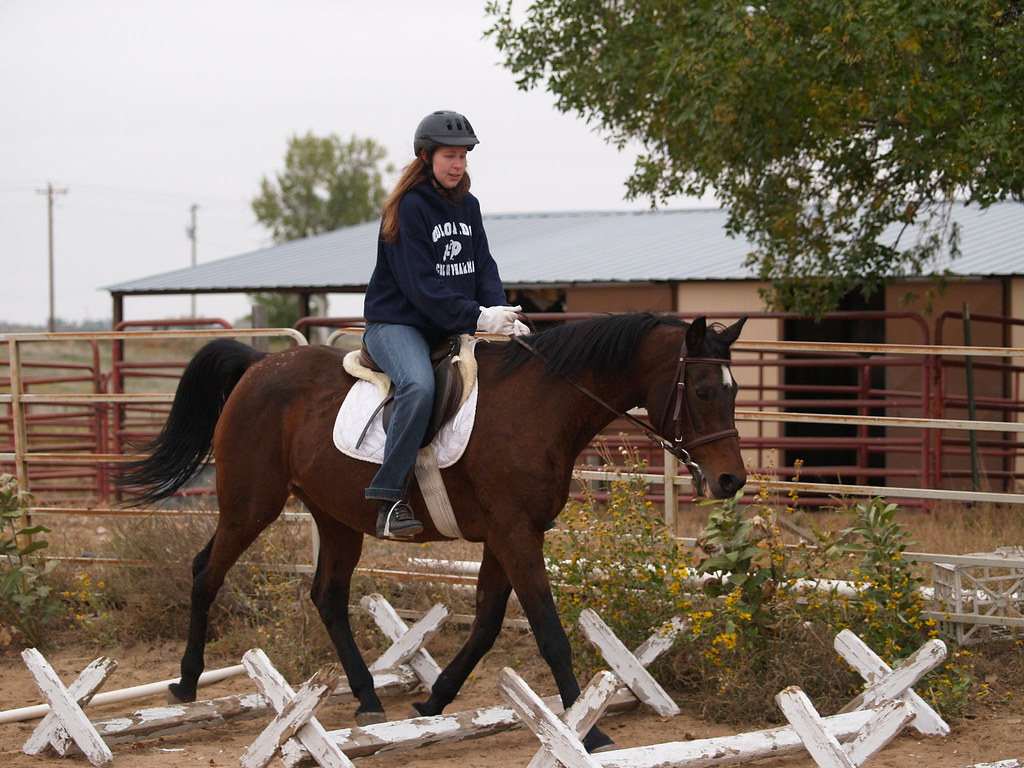
For maximum benefit, ground pole work should be thoughtfully integrated into your overall training schedule rather than treated as an occasional novelty. Many professional trainers recommend dedicating two 15-20 minute pole sessions per week, using them as specific training elements rather than full-length workouts to prevent overtraining the specific muscle groups involved. Consider scheduling pole work after an appropriate warm-up but before more demanding exercises in your training session, using the poles to activate the horse’s core and hindquarters before moving on to specific dressage movements or jumping exercises. Variety is crucial for maintaining your horse’s interest and preventing adaptation plateaus, so rotate between different pole patterns and heights rather than repeating the same exercises in consecutive sessions. Integrate pole work strategically around competitions or intensive training periods, potentially increasing frequency during foundation-building phases and reducing it during competition preparation when mental and physical freshness takes priority.
Tracking Progress: How to Measure Improved Engagement
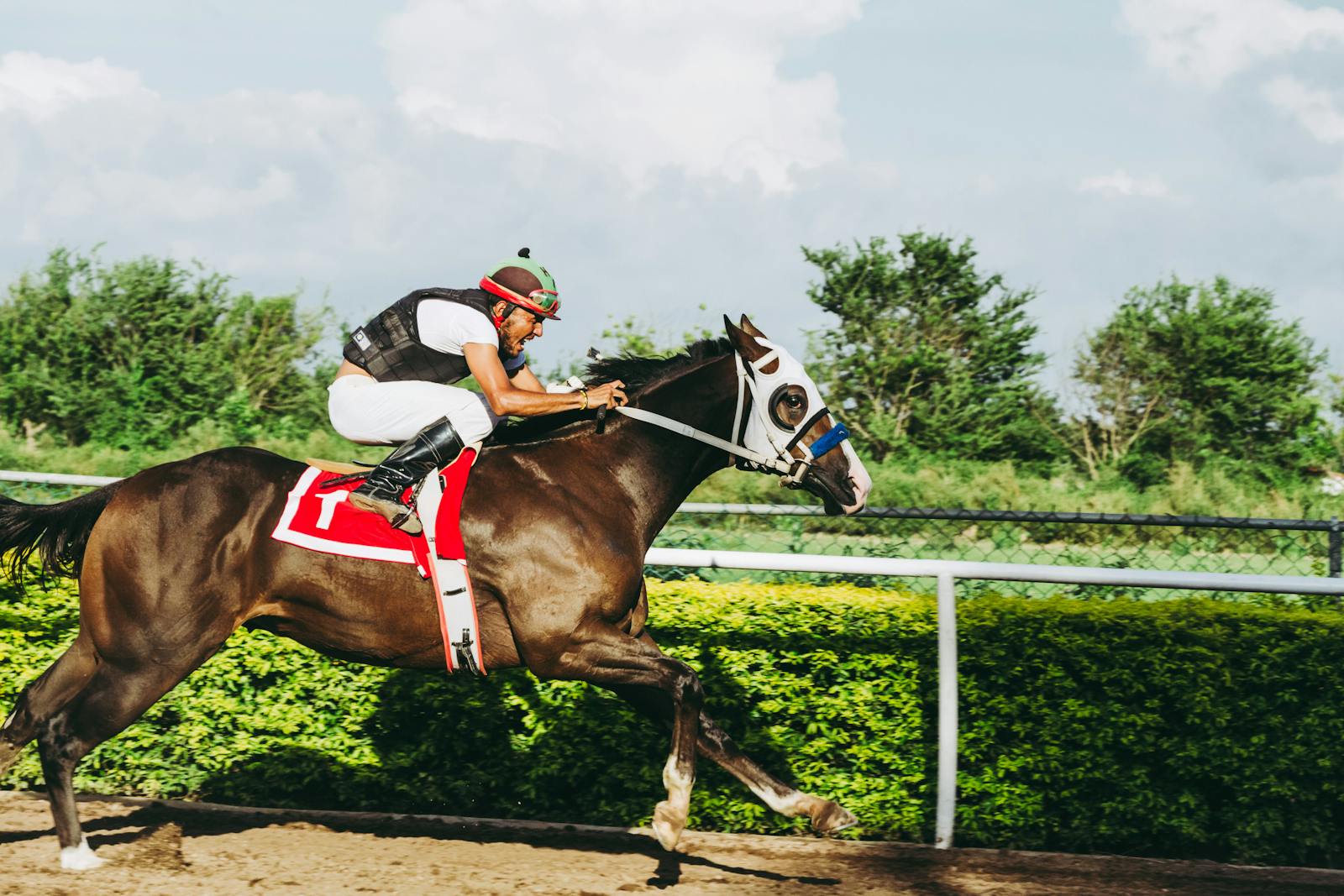
Recognizing and documenting improvements in engagement helps maintain motivation and provides valuable feedback about your training approach. Visual assessment offers immediate feedback—look for a horse that travels with a raised back, engaged abdominals, and hind legs stepping further under the body compared to when you began pole work. Video recordings provide objective documentation of progress, allowing you to compare your horse’s movement patterns over weeks and months, noting improvements in posture, stride quality, and overall carriage that might be difficult to perceive in real-time. Tactile feedback—what you feel in the saddle—provides subtle but important information about engagement, including increased “swing” through the back, greater responsiveness to half-halts, and a sensation of the horse carrying more weight behind. For quantifiable metrics, track how your horse manages increasingly complex pole patterns, noting when they can successfully navigate exercises that were initially challenging, and considering this mastery a concrete sign of improved strength and engagement.
Advanced Applications: Discipline-Specific Pole Work
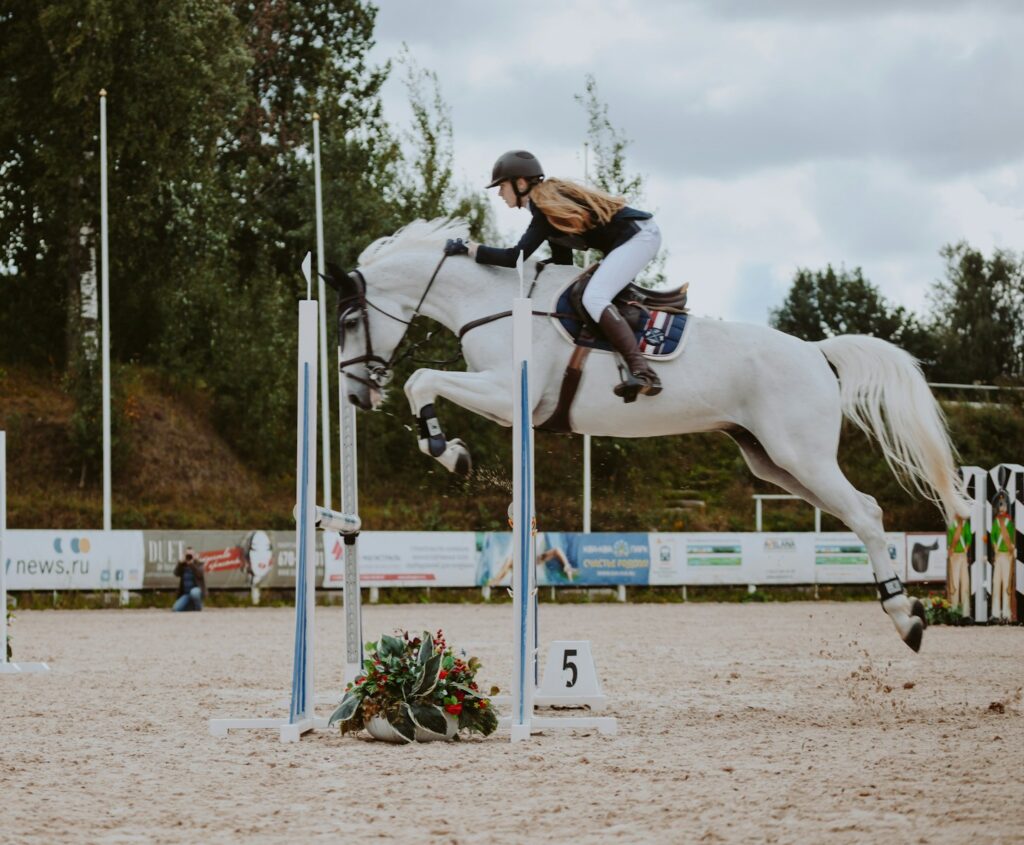
As your horse’s engagement fundamentals improve through basic pole work, you can tailor exercises to support specific discipline goals. For dressage horses, incorporate pole work that emphasizes lateral movements, such as setting up poles in a fan pattern and asking for leg yields across them, developing the engagement needed for collected lateral work. Jumping horses benefit from alternating raised and flat poles in patterns that mimic course elements, encouraging the horse to adjust stride length and maintain engagement between fences without getting flat or rushing. Western performance horses can work over pole patterns that develop the engagement required for balanced spins and rollbacks, focusing on maintaining collection through tight turns while navigating poles. Even trail and pleasure horses benefit from specific pole exercises that simulate terrain challenges, teaching them to engage appropriately for hills, uneven ground, and terrain transitions. By adapting basic pole principles to your specific riding goals, you create engagement that transfers directly to your primary discipline.
Conclusion: The Long-Term Benefits of Consistent Pole Work
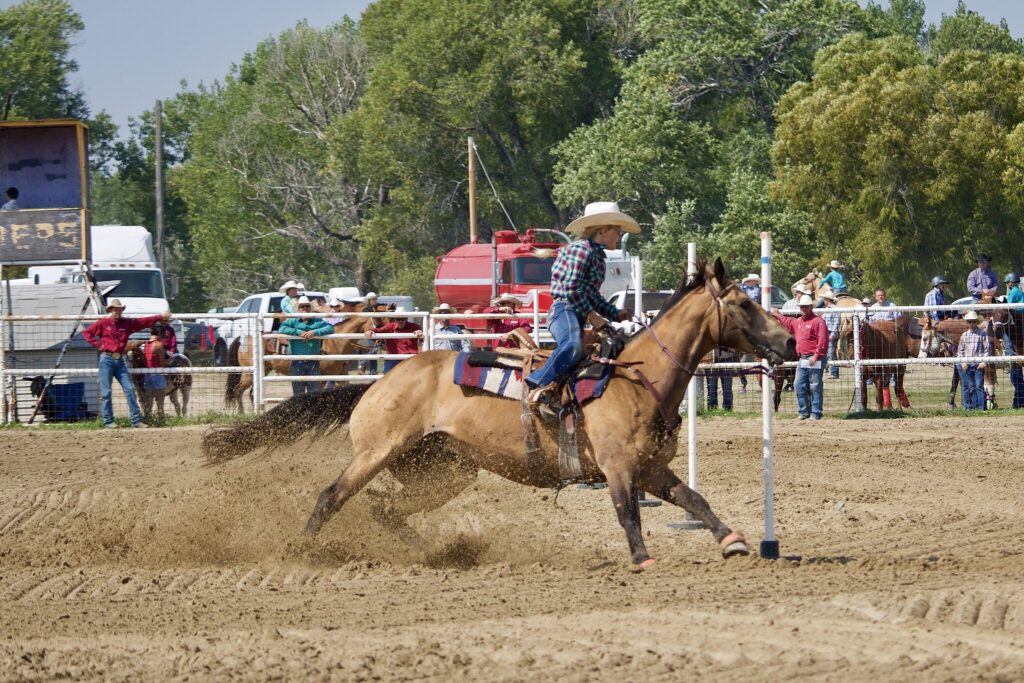
Ground pole work represents one of the most accessible yet powerful training tools available to riders committed to developing genuine engagement in their horses. When implemented consistently and progressively, pole exercises build the physical strength, body awareness, and mental focus that form the foundation of advanced performance across all riding disciplines. Beyond the immediate improvements in gait quality and responsiveness, regular pole work contributes to your horse’s long-term soundness by developing the muscular support system that protects joints and prevents compensation patterns that lead to injury. Perhaps most importantly, the varied mental challenge of navigating pole patterns creates a more attentive, thinking equine partner who understands how to use his body effectively and remains engaged both physically and mentally throughout work sessions. By incorporating ground poles as a regular component of your training program, you invest in a systematic approach to developing the engaged, balanced horse that all equestrians aspire to ride.

